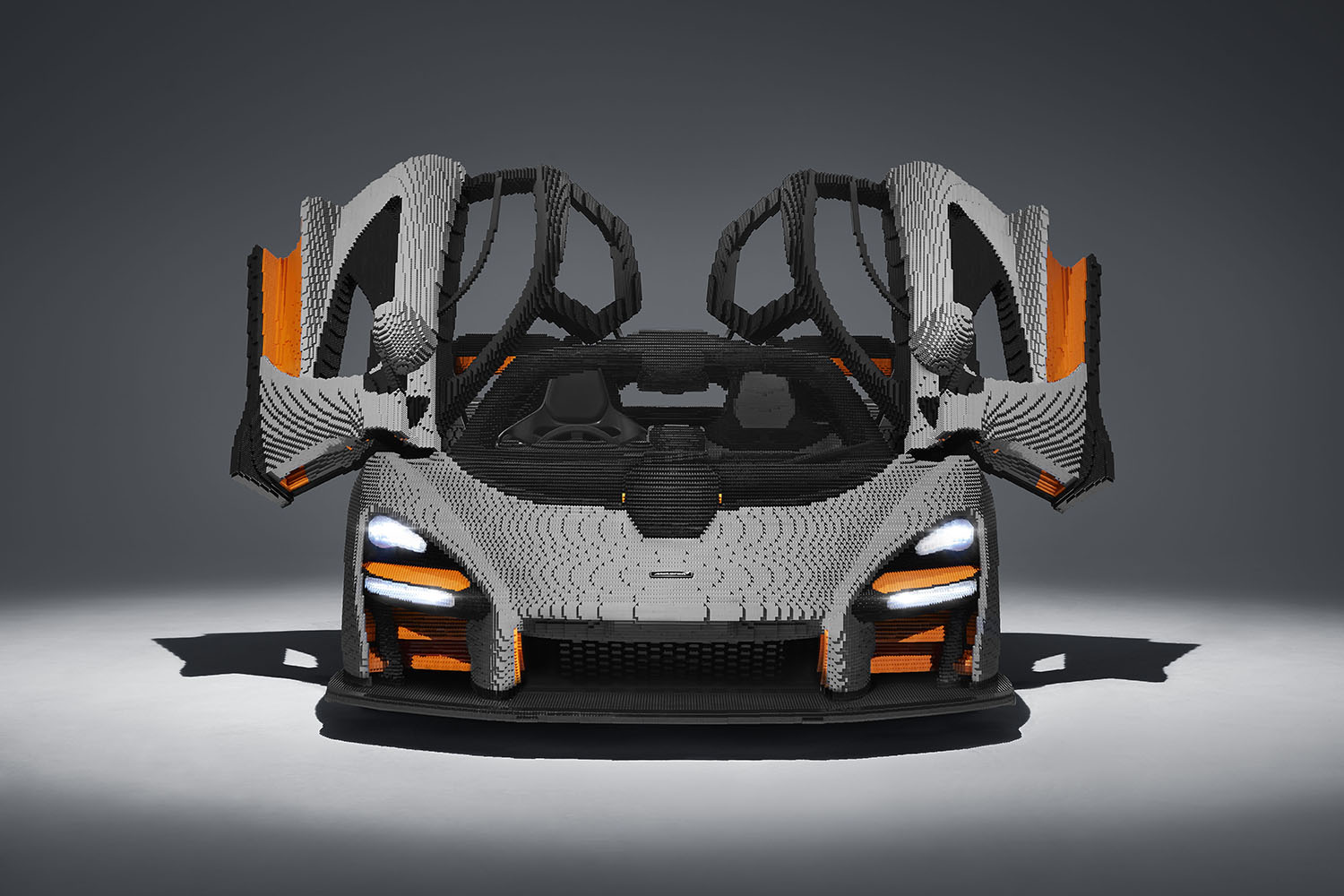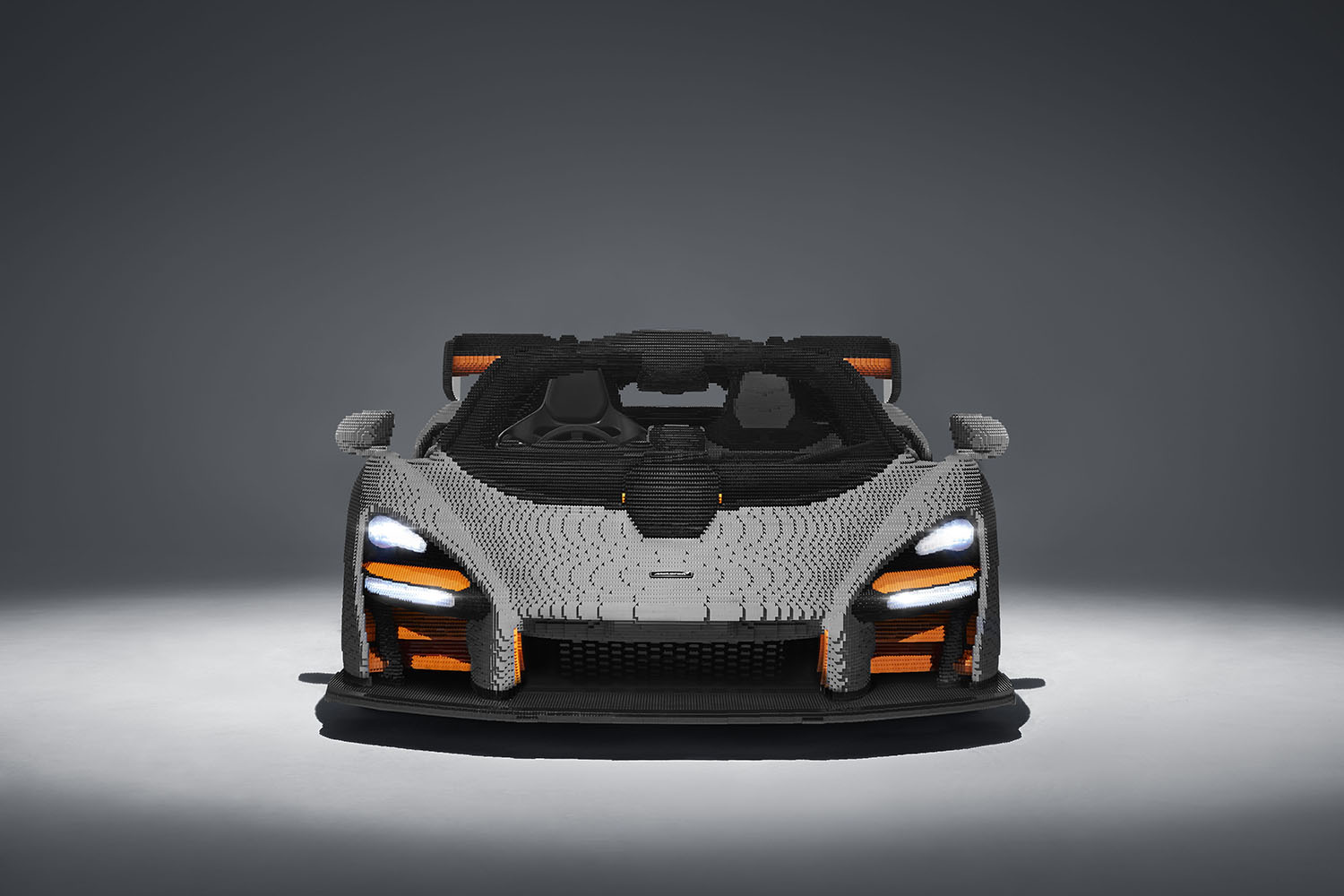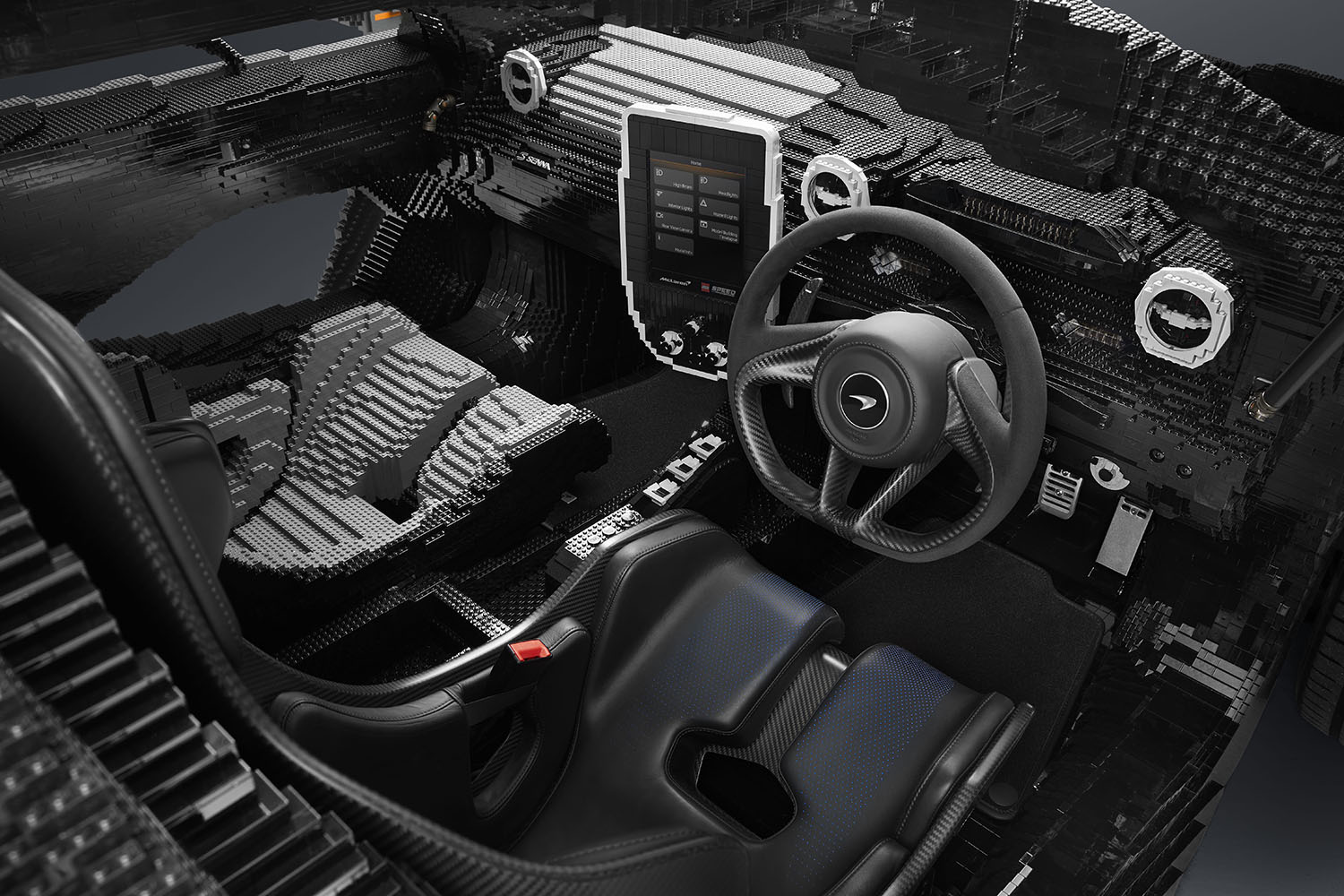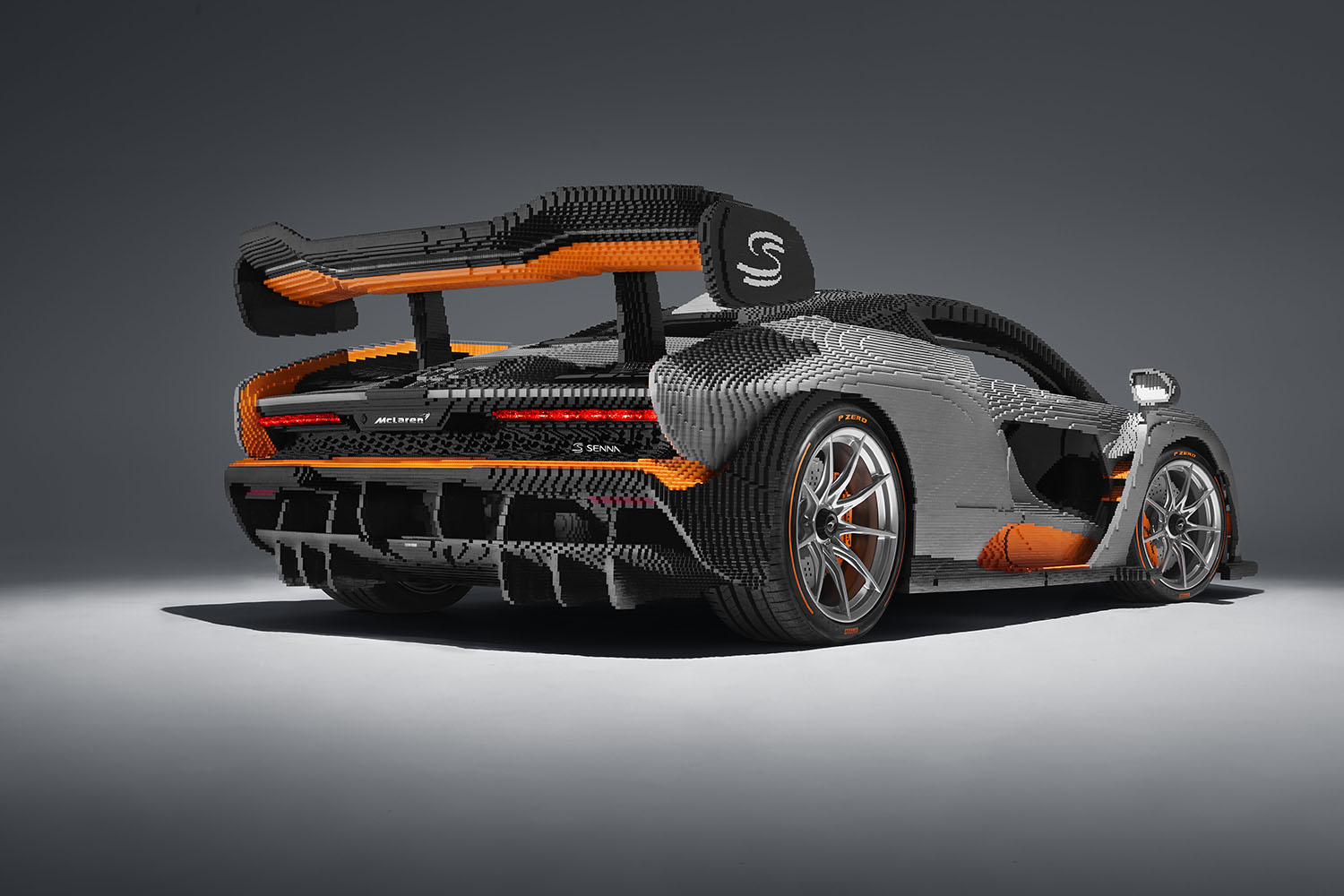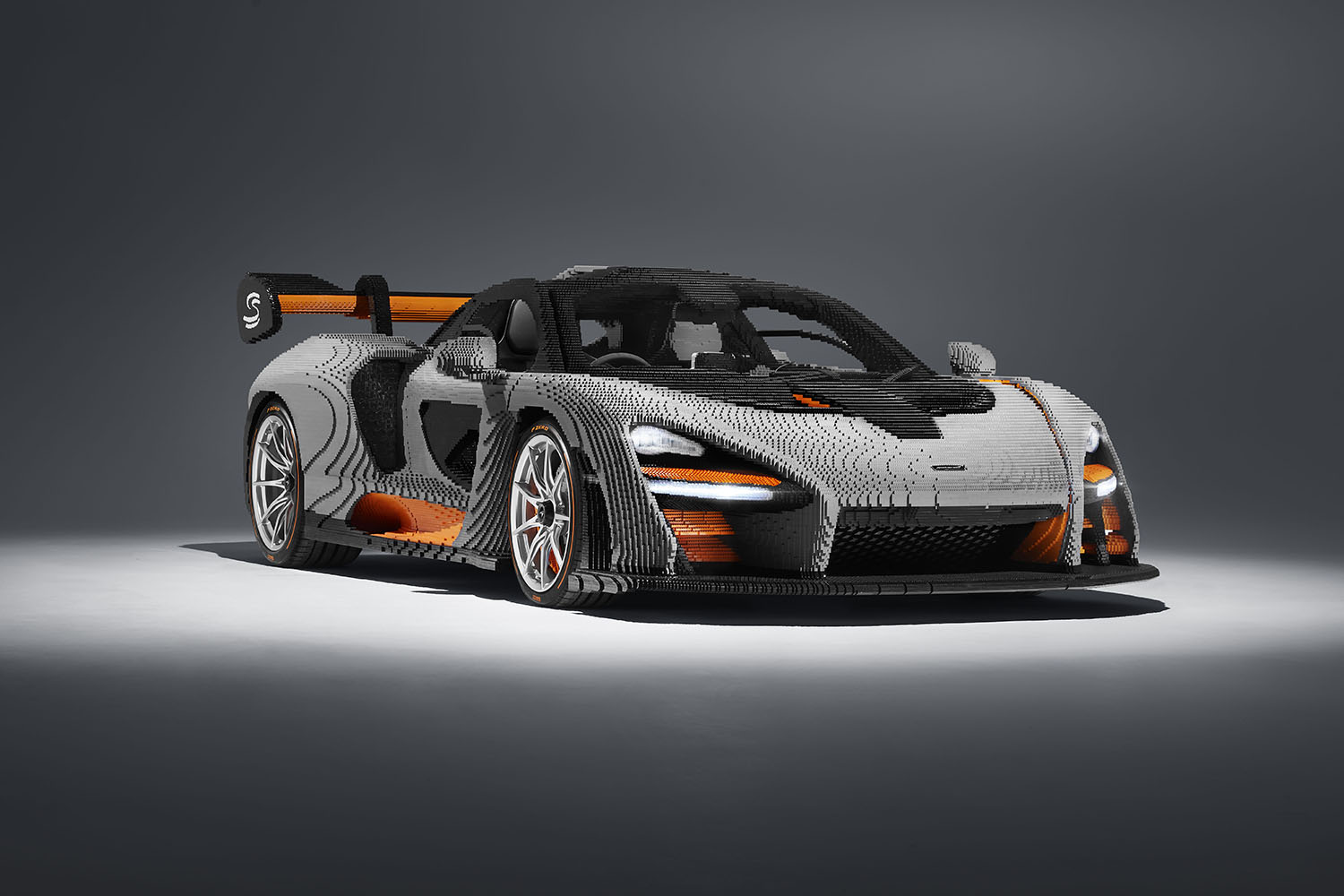The newest LEGO supercar from British automaker McLaren makes the 3,599-piece, life-size LEGO 720S built last year look like child’s play. At nearly half a million pieces, the full-scale LEGO McLaren Senna is nearly identical to its metal muse. However, it took “shifts of specialist assemblers” 4,935 hours to complete; McLaren could have created nine real Sennas in that time, so yes, LEGO’s attention to detail is pure insanity. And the toy company picked one hell of a car to re-create.

McLaren calls the Senna its “most extreme road-legal track car.” The model takes its name from Formula One World Champion Ayrton Senna, who earned three F1 World Championships behind the wheels of a McLaren. Senna is considered one of the most iconic F1 drivers in the sport. It wasn’t until 2017 that McLaren released the full-size Senna to honor his legacy, (he perished in an accident on the track of the 1994 San Marino Grand Prix) and we appreciate that they made it street-legal. I mean, a V8 that accelerates from 0-60mph in 2.7 seconds. Hello, happier work commute. Plus, just look at the thing. It’s a hunk.
A run of only 500 full-size Sennas was produced at $958,966 each, making the car a coveted collector’s edition. This may sound loony, but we’d rather have the one and only LEGO version … plus the McLaren Senna sold out as soon as it was announced.
LEGO’s Senna is an absolute beast on its own, weighing 3,348 pounds (about 1,102 pounds more than the real car). This means you can’t drive it like LEGO’s life-size Bugatti Chiron, but kids and adults can sit in the driver’s seat and push buttons, including the start button (located on the roof because, hey, McLaren can do anything they want), activating the lights, infotainment center, and a simulation of the growling 208-mph engine.
Sitting on LEGOs is torture, which is why the seats are legit McLaren carbon-fiber chairs, and the steering wheel and pedals are transplanted directly from the real Senna. This is the first LEGO McLaren to have interior parts from real cars. McLaren badges also note the wheels and Pirelli tires exactly as specified on the actual car prop it up. Still, the coolest features are the all-LEGO dihedral butterfly doors.
It took 42 men and women assembling 467,854 individual LEGO elements to produce this masterpiece — not to mention the scrupulous design and engineering beforehand to allow plastic bricks to mimic sultry Senna curves. The final product is replicated in the British car manufacturer’s Victory Grey color with bright orange hints, exactly like the car.
You’ll have to hop a flight to England for the Goodwood Festival of Speed in July to see the life-size McLaren Senna on display. However, a much smaller LEGO McLaren Senna was added to LEGO’s Speed Champions series, a pillar of toys replicating authentic, realistic buildable cars from iconic brands such like Bugatti, Mercedes, Ferrari, and Porsche. In other words, it’s LEGO’s category for grown men who still play with LEGOs. (No shame in that game.)
At $15, the small LEGO car is 1/50,000th the price of a full-size one but it has one thing the real version doesn’t: its own buildable wind tunnel. “For a car that can generate an amazing 1,763.7 pounds downforce at 155 mph, it is just the thing for junior aerodynamicists to check out the Senna’s exceptional aerodynamic properties,” say members of McLaren. Other must-build Speed Champions cars include a LEGO Bugatti Chiron (no, not the life-size LEGO), a 1968 Ford Mustang Fastback, a Porsche 919 Hybrid, and a Ferrari F40 Competizione.


